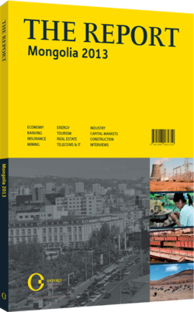The sport of kings: Polo clubs are bringing the game back
An almost mythical land of nomads, epic landscapes and the ghost of Chinggis (Genghis) Khan, Mongolia is a place where nature can be explored on a grand scale. Polo, a tradition that is hundreds of years old and now seeing a resurgence, is an ideal way to experience Mongolia’s landscape and history. Situated around 300 km from Ulaanbaatar, the Genghis Khan Polo and Riding Club offers visitors a chance to “ride in some of the most unspoilt, rugged and breathtaking landscapes on earth,” according to Christopher Giercke, the club’s owner and president. Polo is a team sport played on horseback in which the objective is to score goals against the opposing team, each of which consists of four riders and their mounts. Traditionally played with a wooden ball, the game is now played with a solid plastic ball instead. The rules of polo are written and used to provide for the safety of both players and horses and they are enforced by two umpires, also on horseback.
ANCIENT SPORT: The former Olympic game, which is sometimes referred to as the sport of kings, has a long history in Mongolia. In 2009 ancient tombs yielded evidence of people playing polo in the region as early as the fourth century BCE. The game was originally intended as a training exercise for cavalry units – usually the king’s guard or other elite troops. To warlike tribesmen, who played it with as many as 100 to a side, it represented a miniature form of battle. Mighty Mongol warriors were also known to have played the game in the Middle Ages, when Chinggis Khan’s armies are reported to have substituted the heads of their victims for balls, according to legend. There is also evidence in ancient texts and art of the game being played in Persia as far back as the fifth century BCE. The sport travelled along the Silk Road, flourishing as far afield as India, where it remains a popular sport. Rich as Mongolia’s polo heritage is, however, polo disappeared entirely after the fall of the Mongol Empire in the late 1200s, not to return until the twilight of the 20th century. It has been 14 years since polo was re-introduced as a sport to modern Mongolia and the country now hosts several private clubs.
Besides the recent polo renaissance in Mongolia, the sport is also spreading rapidly throughout Asia – to the south of Mongolia in China, which has over 10 new clubs, to Kazakhstan in the west, and to the east via South Korea and, hopefully, soon in Japan. All of these countries also have a tradition of playing polo that dates back to the Middle Ages, when it was seen as a type of martial art on horseback.
IDEAL LANDSCAPE: In Mongolia the polo season begins in late June and runs through the middle of September. With vast grazing lands equalling the size of Western Europe, and as very little land has been fenced in, the country offers an almost endless array of riding trips. Riders can organise treks to high-altitude lakes, hot springs and volcanoes in the pristine wilderness of the Orkhon National Park. The climate of the park, which has an altitude of 1500 metres, is comparable to a summer in the Alps, with warm days and cool nights.
INTERNATIONAL PARTICIPATION: In 2012 Giercke’s club hosted teams from China, New Zealand and Europe to compete for the Genghis Khan Trophy. The club also functions as a talent scout for young Mongolian players. Children from the surrounding area are welcome to play during the summer period, with the most talented are offered the opportunity to travel to countries like New Zealand to hone their skills and receive further training abroad.
Giercke said he has a dream that Mongolian polo players will one day be able to compete at the international level. “Mongolians are excellent riders, it only makes sense that they can become excellent polo players too, if the relevant training is provided,” he told OBG.
When visiting Mongolia you might want to join a round of polo, in addition to trying other traditional games such as wrestling, archery and horse racing.
You have reached the limit of premium articles you can view for free.
Choose from the options below to purchase print or digital editions of our Reports. You can also purchase a website subscription giving you unlimited access to all of our Reports online for 12 months.
If you have already purchased this Report or have a website subscription, please login to continue.

